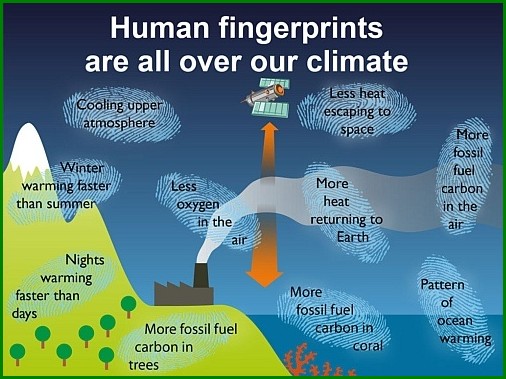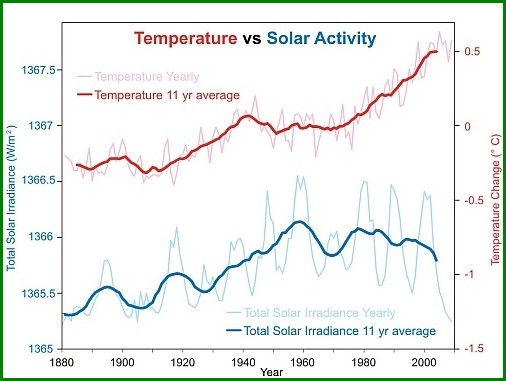It is a human activity is the main cause of atmospheric changes of recent decades, it is the human activity is the main cause of atmospheric changes of recent decades, and while politicians are prepared to criticize the upcoming report of the Intergovernmental Panel on Climate Change (IPCC), the scientific community continues to forge new research.
The eruption of Mount Pinatubo, photographed with a U.S. Air Force base, Clark, June 12, 1991. It is the only natural phenomenon that has had a significant impact on the Earth's atmosphere from 1979 to 2005. (Photo by USGS.)
KL as something already written about the attempts to make the climate models as accurately reflect the processes that control the climate. A new article shows how such models help to understand Thuabout is really going on with the planet. In this sense, climate models are no different from astrophysical models and plate tectonics: they all describe processes that can not be reproduced in the laboratory, but for which some of the data collected.
In our case, the set of factors (from stochastic processes to the cycle of currents in the ocean) creates a short-term variability of the climate system, which is worth considering as noise. With respect to these factors superposition are called signals - significant changes which lead to long-term changes of climate. They are often referred to as climatic factors (forcings), because they are introducing a new climate equilibrium.
Decades of research have allowed to identify such climate-forming factors such as variations in solar activity, volcanic eruptions and changes in the concentration of greenhouse gases. Studi attribute just once more consider these factors in an attempt to determine which of them caused the recent changes in the climate system.
Attribution is possible, because climatic factors affect the atmosphere distinct ways (as an English-speaking scientists like to say, they leave fingerprints», fingerprints). For example, the depletion of ozone in the stratosphere cools, for ozone - a greenhouse gas, that is, one that traps heat. Conversely, strong volcanic eruptions emit large amounts of material, and some of the particles absorb sunlight, which leads to heating of the stratosphere.
But volcanoes are not only compensate for the loss of ozone: other particles of volcanic materials reflect light, not allowing it to penetrate into the lower atmosphere (troposphere), thereby cooling them. Thus it is possible to attribute (attribute) the observed changes in various climatic factors.
The authors of the new study compared the satellite data that provide a three-dimensional picture of the atmosphere, with detailed and general information about temperature. The results were compared with the testimony of several climate models, which run with different initial conditions, as when climatic factors were only solar activity, volcanoes, or just all kinds of human impact (greenhouse gases, aerosols, ozone depletion). Also carried out simulations with the only natural and anthropogenic impacts only, and then both.
Tracing a large portion of the trend of satellite data (from January 1979 to December 2005), the researchers were able to show that solar activity has not had nearly no effect on the climate (and this is logical, because in a given period of solar activity have not changed). For isklyucheniemPinatubo, there were no violent eruptions. And the bottom line natural effect was minimal: a very slight cooling of the stratosphere outside the poles and as a weak warming in the lower atmosphere.
This result is very hard to reconcile with the satellite data, which indicate strong cooling of the stratosphere, reaching even the upper troposphere. On the contrary, in the lower troposphere have warmed, especially closer to the North Pole, while the air over Antarctica has warmed slightly.
And much better, perfectly combined observations from the testimony of models in which human-induced climate-factors were the only ones. They talk about the strong cooling of the stratosphere over both poles and weaker cold weather in other parts of it, as well as a warming in the lower atmosphere, and the temperature in the Arctic has increased particularly strongly. When you combine the natural and anthropogenic impacts coincidence with the satellite data was even clearer.
Hence, the authors conclude that it is human activity is the main cause of atmospheric changes of recent decades.
Of course, the match is not perfect. Models underestimate the cooling of the stratosphere and overestimate the warming in the lower atmosphere. Furthermore, unlike the model observed data indicate a strong warming in the Arctic.
There is a question about the extent of human influence on the atmosphere. Statistical calculations indicate that it is high. But the authors go even further, introducing to quantify noise (short-term climate variability) and showing that (except for a short period in the eruption of Mount Pinatubo) the signal of anthropogenic influence rises above the noise of natural variability.
The authors believe that the results obtained are reliable, despite all the uncertainties inherent in the models and the observations.
In short, nothing new, just made a careful analysis of what has been analyzed many times. Nevertheless, it is a good reminder that, as a result of which the IPCC staff come to their conclusions.
in the wake of PNAS, Ars Technica, compulenta.computerra.ru
The Breathing Earth
Earth, our home planet, is a beautiful blue and white ball when seen from space. The third planet from the Sun, it is the largest of the inner planets. Earth is the only planet known to support life and to have liquid water at the surface.
Warm near the equator and cold at the poles, our planet is able to support a variety of ecosystems because of its diverse climates. Earth's climates have changed incredibly during its 4.6 billion year history. Today, climates are warming more rapidly as natural processes are affected by modern global changes caused by humans.
Earth's climate is warming. It is almost certain that human activities are causing our planet to warm. According to Climate Change 2007, the forth report from the Intergovernmental Panel on Climate Change (IPCC), there is about a 9 out of 10 chance of this. The human activities that are causing global warming include burning fossil fuels, changes in land use, and agriculture. Burning fossil fuels like oil, gas, and coal is releasing greenhouses gases into the atmosphere. Land use changes are decreasing the amount of plants that take greenhouse gases out of the atmosphere. And agriculture is releasing greenhouse gases like methane and nitrous oxide.
This is causing air and oceans to warm. Snow and ice in Earth's polar regions melts. Sea level rises because of warmer oceans and the added water from melting glaciers and snow. Many effects of global warming have been seen over the past few decades. Arctic temperatures have risen at twice the rate of the global average in the past century. The amount of precipitation in different regions of the world has changed, and so have aspects of extreme weather events such as droughts, heat waves, and the intensity of hurricanes and typhoons.
According to computer models, whose results were summarized in the IPCC report, more global warming is in our future. For the next two decades global warming of about 0.2° Celsius is projected. If we continue to emit as many, or more, greenhouse gases, this will cause more warming during the 21st century than we saw in the 20th century. During the 20th century Earth's average temperature rose 0.6° Celsius. During the 21st century, various computer models predict that Earth's average temperature will rise between 1.8 and 4.0° Celsius.

 The annual average temperature change (thin light red line) and the 11-year average (thick dark red line), according to NASA GISS. Total annual surface solar irradiance (thin blue line) and the 11-year average (thick blue line), according to Krivova et al. (1880 to 1978) and PMOD (1979 to 2009).
The annual average temperature change (thin light red line) and the 11-year average (thick dark red line), according to NASA GISS. Total annual surface solar irradiance (thin blue line) and the 11-year average (thick blue line), according to Krivova et al. (1880 to 1978) and PMOD (1979 to 2009).